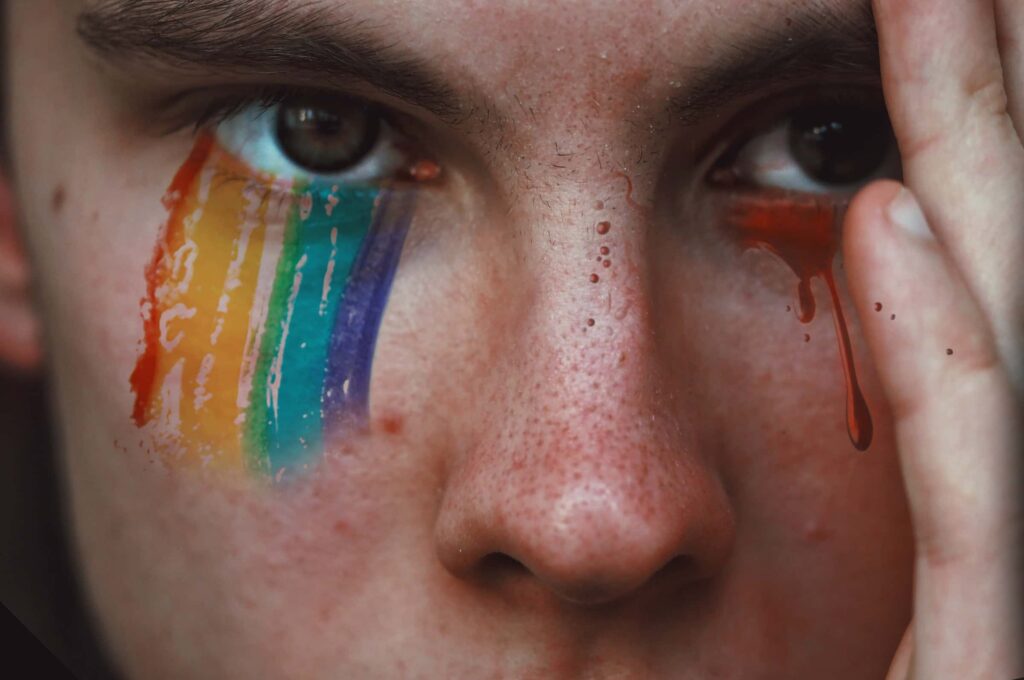
As we navigate our way through life, we often face challenges that are deeply rooted in our own perceptions and beliefs.
One such challenge that has a significant impact on the LGBTQ+ community is internalised homophobia.
In this article, I aim to explore the concept of internalised homophobia, its impact on mental health, and how we can work towards overcoming it.
What is Internalised Homophobia?
Internalised homophobia refers to the negative feelings, beliefs, or attitudes that some LGBTQ+ individuals hold towards themselves as a result of societal homophobia (source).
It is the process by which an individual internalises society’s negative stereotypes and prejudices towards LGBTQ+ people, resulting in self-stigma and, often, self-loathing (source).
In essence, internalised homophobia is the internal conflict between one’s self-acceptance and society’s disapproval.
This can manifest in various ways, such as denial of one’s sexual orientation, self-blame for being LGBTQ+, or even engaging in behaviours that perpetuate homophobic attitudes.
Impact on Mental Health
Research has consistently shown that internalised homophobia can have detrimental effects on mental health (source).
Some of the most common mental health issues associated with internalised homophobia include depression, anxiety, low self-esteem, and suicidal ideation (source).
It can also result in substance abuse and risky, unwanted sexual behaviours, further exacerbating mental health concerns (source).
Moreover, internalised homophobia can lead to feelings of isolation, as individuals may distance themselves from the LGBTQ+ community or avoid forming close relationships with others for fear of rejection.
This isolation can create a vicious cycle where individuals feel increasingly alienated from their support networks, leading to further mental health struggles.
Addressing Internalised Homophobia
It’s important to acknowledge that internalised homophobia is not something that can be easily overcome, as it is often deeply ingrained in one’s psyche.
However, with the right support and resources, it is possible to work towards addressing and overcoming these negative beliefs.
Below are some strategies that can help:
- Seek Professional Help: Psychotherapy can be an invaluable resource for individuals struggling with internalised homophobia. A mental health professional can help you explore the root causes of your negative beliefs and develop strategies to combat them. Find a therapist who is experienced in working with LGBTQ+ clients and clearly understands the challenges you may face.
- Connect with the LGBTQ+ Community: Building connections with other LGBTQ+ individuals can help you foster a sense of belonging and support. Reach out to local LGBTQ+ groups, attend events, or join online forums to create a supportive network. Sharing your experiences and learning from others can be a powerful way to combat internalised homophobia.
- Educate Yourself: Educating yourself about LGBTQ+ history, culture, and the challenges faced by the community can help combat internalised homophobia. This knowledge can empower you to challenge the negative stereotypes and beliefs that contribute to your self-stigma. There are numerous books, documentaries, and online resources available to help broaden your understanding of LGBTQ+ issues.
- Engage in Self-Reflection: Take time to reflect on your thoughts and feelings related to your sexual orientation or gender identity. Ask yourself where these negative beliefs may have originated and how they might have been reinforced over time. Journaling or engaging in mindfulness exercises can be helpful tools for self-reflection.
- Challenge Negative Thoughts: When faced with negative thoughts about your sexual orientation or gender identity, it’s important to challenge and reframe them. Are you being kind to yourself by using the words and perspectives of others? What might a more compassionate and kinder person say?
- Practice Self-Compassion: Be kind to yourself and remember that internalised homophobia is not your fault. It’s a result of societal prejudices that have been ingrained over time. Research suggests that practising self-compassion can help you acknowledge your feelings without judgement and give yourself the support you need to heal.
- Advocate for Change: Taking an active role in advocating for LGBTQ+ rights and fighting against homophobia can be empowering and contribute to dismantling internalised homophobia. This could involve supporting LGBTQ+ organisations, participating in Pride events, or using your voice to challenge discriminatory policies or attitudes.
Conclusion
Internalised homophobia is a complex issue that affects many LGBTQ+ individuals.
Its impact on mental health cannot be overstated, and addressing it requires a multifaceted approach that involves personal reflection, education, and professional support.
By understanding the roots of internalised homophobia and working towards overcoming it, we can foster a more accepting and supportive environment for ourselves and others within the LGBTQ+ community.


2 thoughts on “Unravelling Internalised Homophobia: Understanding and Addressing Our Own Prejudices”